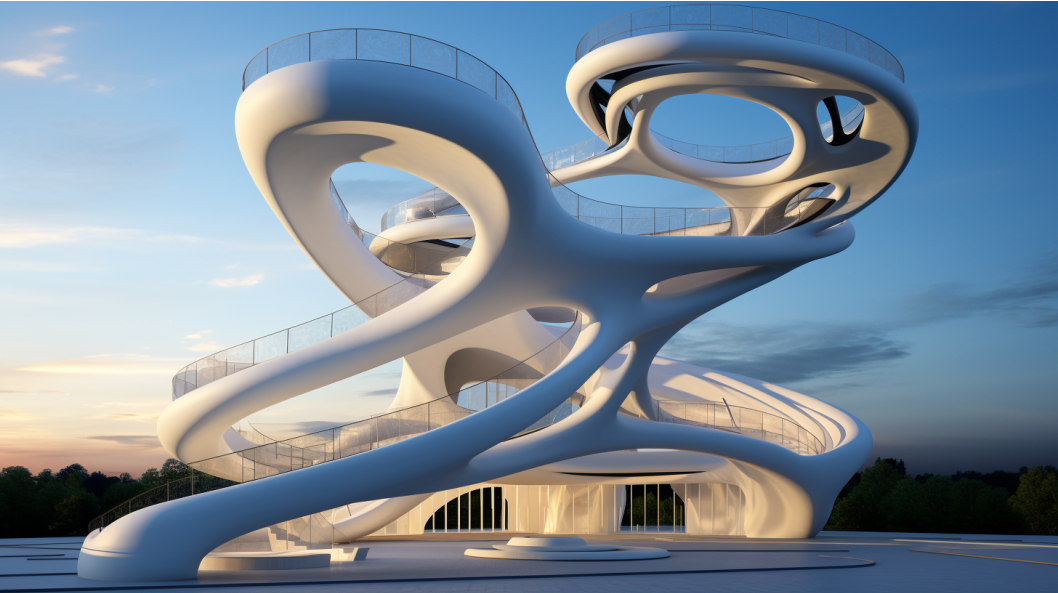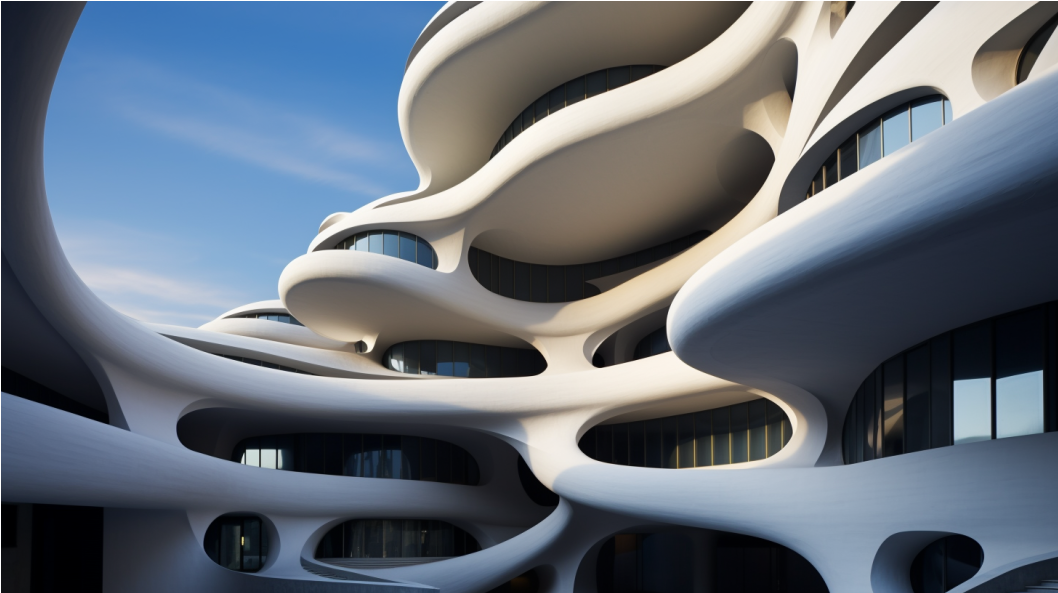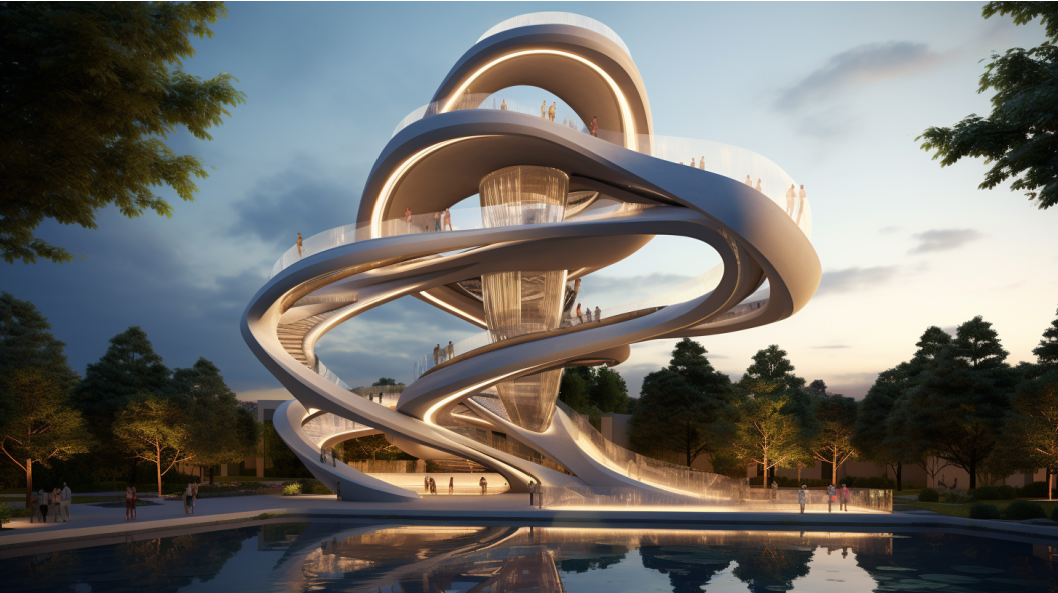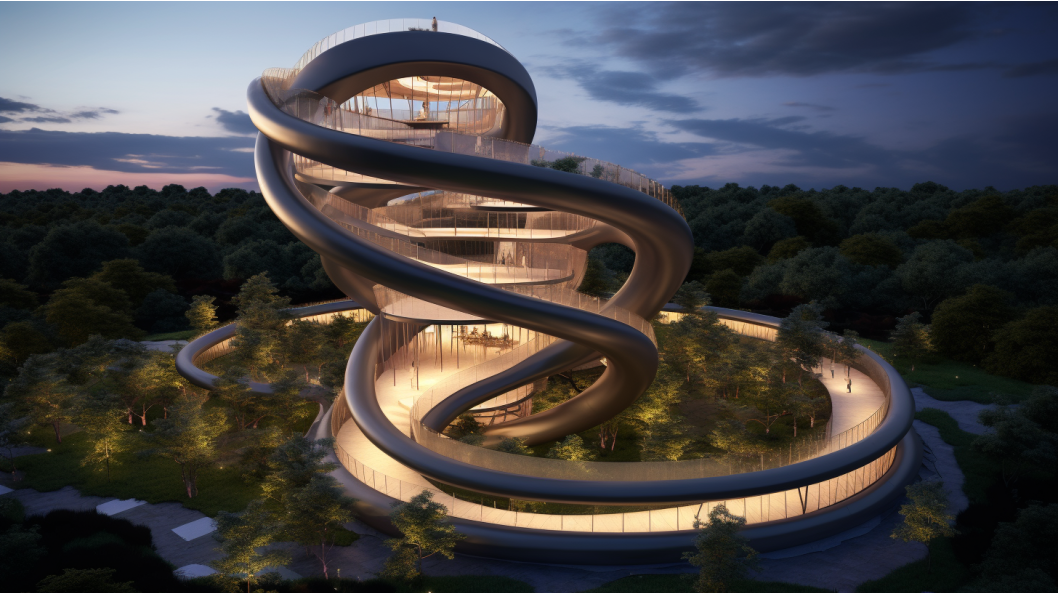Twisting and Turning: The Beautiful and Strong Design of Spiral Buildings
Helicoidal Architecture, with its sweeping curves, combines both beauty and clever structural design. In building design, a helicoid (a shape that curves and twists at the same time) doesn't just add to the looks; it also has deep importance for how the building works and how strong it is. These shapes twist upward, revealing amazing engineering and design, while also making sure the building is solid, long-lasting, and beautifully elegant.

Where Beauty Meets Strength
Using helicoidal structures in architecture blends strength with style, creating a unique look of movement and dynamism. Famous spiral buildings like the Turning Torso in Sweden and the Evolution Tower in Russia break away from traditional architectural rules. They provide vast visual and physical experiences that feel like a mix of dream and reality. The natural curves and spirals of helicoidal architecture break the monotony of straight and box-like structures, creating a distinct and visually captivating outline against city skylines.
Combining Form and Function
In helicoidal architecture, the circular and spiraling shapes aren't just for looks; they're also very practical. The twisting forms often reduce the impact of environmental elements like wind and sunlight. They redistribute these forces in a way that improves the building's stability and energy efficiency. By doing so, this design offers a sustainable architectural model that smartly responds to environmental factors, almost as if the building's shape is constantly talking to its function.

Old Ideas, New Designs
The snake-like appeal of helicoidal forms isn't a new architectural fascination. Ancient structures like the Tower of Babel or fictional twisting towers in art and literature have sparked architects' imaginations for centuries. In these stories and images, helicoidal structures have always symbolized a connection between earthly life and heavenly aspirations.
In modern applications, architects use sophisticated computer design tools and advanced material sciences to turn these mythical forms into real, physical structures. With modern technological advancements, architects are no longer limited by traditional building methods, allowing them to explore the incredible potential of helicoidal forms that twist, wind, and rise into the heavens.
Sustainability and What's Next
Interestingly, the future implications of helicoidal architecture go far beyond just how they look, placing them at the forefront of sustainable building practices. These shapes can naturally control light and heat, reducing the need for artificial climate control, which makes them environmentally friendly. Furthermore, their unique shapes often support the use of green building elements, such as vertical gardens. These not only make them look better but also promote biodiversity and clean the air.
Impact on Society and Culture
Helicoidal architecture, with its bold and distinctive look, also has the potential to become symbols of social, cultural, and economic success. Much like how the Eiffel Tower or the Burj Khalifa represent their respective cities, new helicoidal structures could embody the dynamism and progress of urban landscapes, becoming landmarks that reflect the spirit and aspirations of the people who live there.

A Changing Architectural Language
As we explore the evolving world of architectural design, helicoidal structures appear as symbols of human imagination and technical skill. They don't just stand as proof of what's possible in architecture; they also tell poetic stories of cultures, cities, and civilizations that dare to twist and reach towards the unknown.
In a world that is constantly moving towards sustainable, innovative, and emotionally impactful designs, helicoidal architecture gracefully fits into these ideas. It offers a path that is not only strong and beautiful but also deeply connected to ecological and social stories. The winding elegance of these architectural marvels, therefore, stands twisting and turning against the horizons, hinting at a future where design constantly blends with meaning, usefulness, and a balanced elegance that timelessly spirals into our shared human experience.
Helicoidal Architecture, with its sweeping curves, encapsulates both aesthetic beauty and an alluring structural intelligence. In the architectural panorama, a helicoid — a shape that curves and twists simultaneously — doesn’t merely contribute to the aesthetics but also fosters a profound structural and functional significance. The forms twist upward, unfurling the marvel of engineering and design, while concomitantly ensuring that the built structure is cohesive, enduring, and captivatingly elegant.

Welcome to planksip® – your go-to media outlet for top-notch content creation. Get content like this for just $200 per week!
